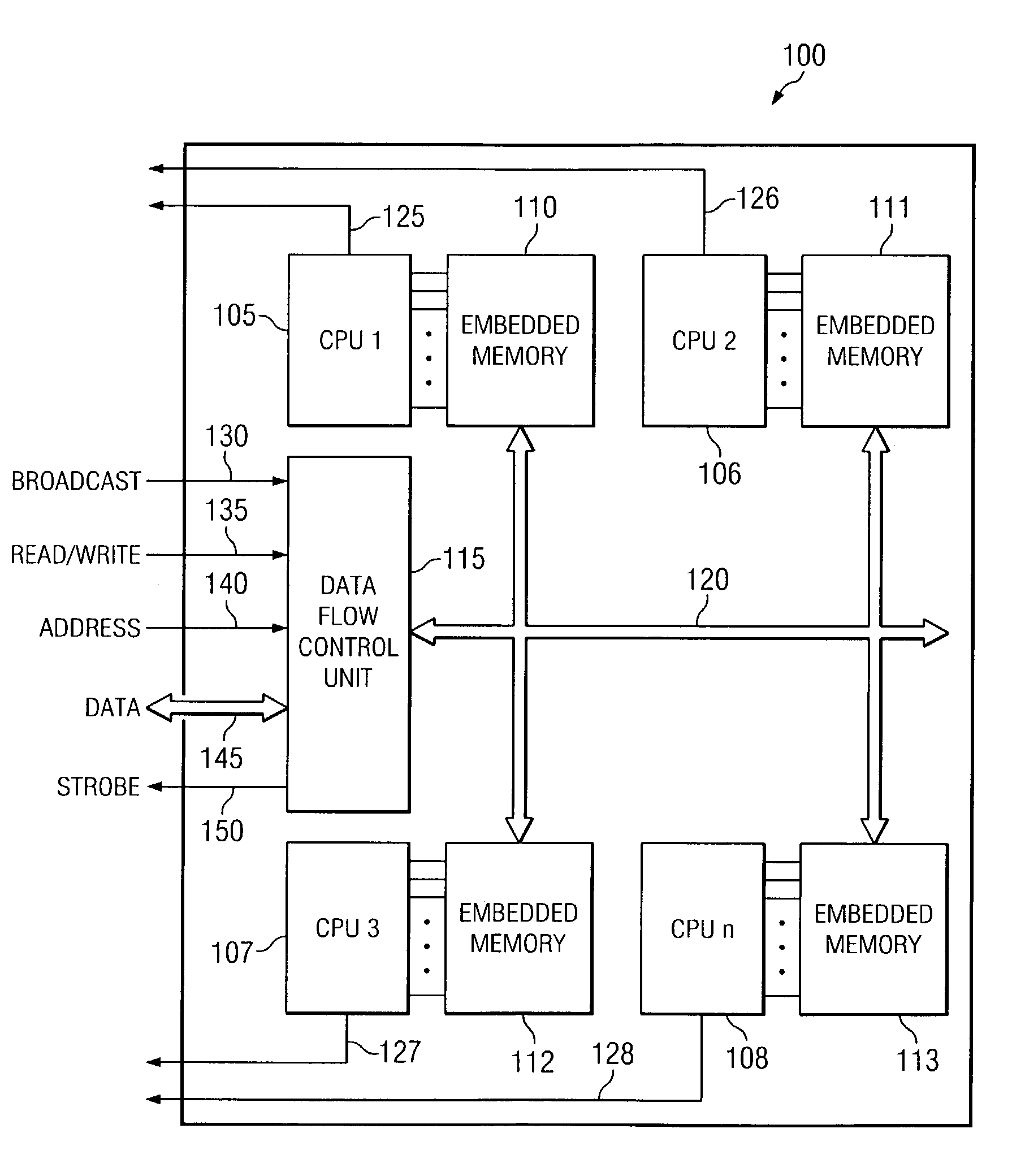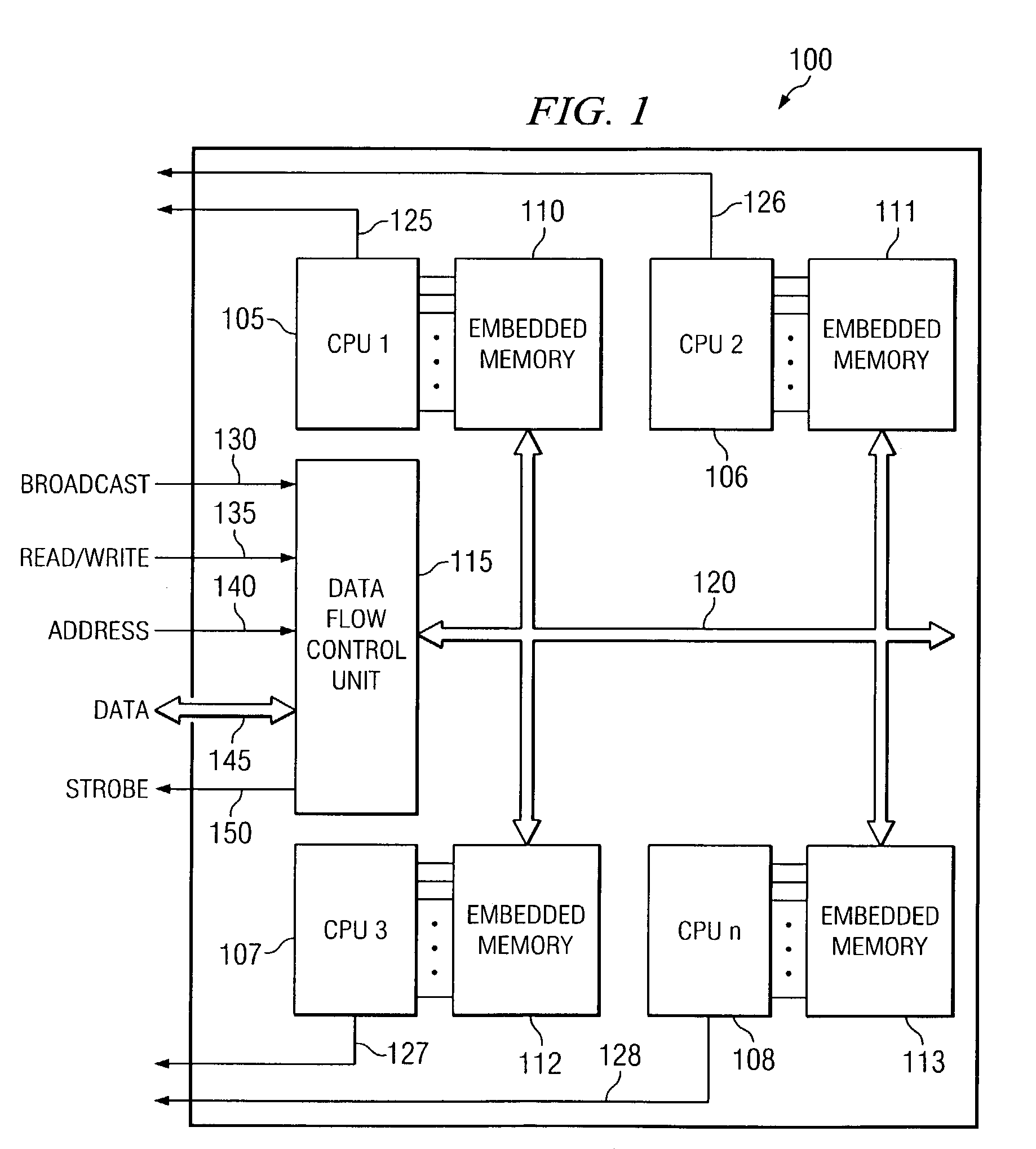Method and apparatus for testing embedded memory on devices with multiple processor cores
a technology of embedded memory and processor core, which is applied in the direction of detecting faulty computer hardware, error detection/correction, instruments, etc., can solve the problems of reducing the time required to off-load a map of memory failures, reducing the time required for memory test, and easy to be easily damaged by particles
- Summary
- Abstract
- Description
- Claims
- Application Information
AI Technical Summary
Benefits of technology
Problems solved by technology
Method used
Image
Examples
Embodiment Construction
[0012]A block diagram depicting a computer chip suitable for use with the disclosed method and apparatus is depicted in FIG. 1. In FIG. 1, the computer chip 100 is comprised of four separate processors 105, 106, 107, 108. Each of these processors is associated with an embedded memory cache 110, 111, 112, 113. Also depicted in FIG. 1 is a data flow control unit 115. The data flow control unit 115 receives information from an external tester and provides that information to each of the embedded memory caches 110, 111, 112, 113. To accomplish this, the data flow control unit 115 is connected to each of the embedded memory caches 110, 111, 112, 113 through a data bus 120. Also depicted in FIG. 1 are four processor status indicators 125, 126, 127, 128. According to one embodiment, each of these processor status indicators comprises a two-bit signal line that indicates the pass, fail, or repair status of an embedded memory cache associated with each corresponding processor. The processor ...
PUM
 Login to View More
Login to View More Abstract
Description
Claims
Application Information
 Login to View More
Login to View More - R&D
- Intellectual Property
- Life Sciences
- Materials
- Tech Scout
- Unparalleled Data Quality
- Higher Quality Content
- 60% Fewer Hallucinations
Browse by: Latest US Patents, China's latest patents, Technical Efficacy Thesaurus, Application Domain, Technology Topic, Popular Technical Reports.
© 2025 PatSnap. All rights reserved.Legal|Privacy policy|Modern Slavery Act Transparency Statement|Sitemap|About US| Contact US: help@patsnap.com



